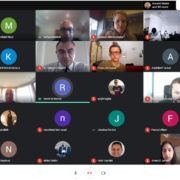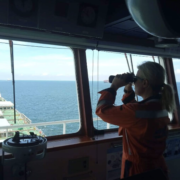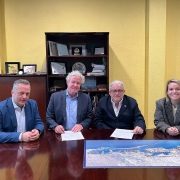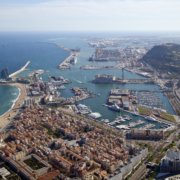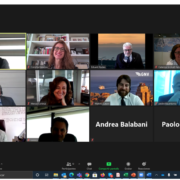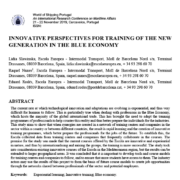Blue Innovation – Autonomous shipping – the maritime industry of the future?
Blue Innovation – Autonomous shipping – the maritime industry of the future?
One of the more controversial topics in shipping is the emergence of autonomous vessels. The feasibility of these new arrivals to the maritime field is today still quite controversial among the majority of industry experts. Nevertheless, what is certain is that, despite the uncertainty and the many sceptics, the International Maritime Organization (IMO) does not disregard these new technological alternative initiatives and continues the debate and establish a methodology for conducting trials and develop a road map to consider the projects and investments of several leading companies of the sector.
The legal framework
The viability of applying these technologies is subject to legal limitations of the sector. Since 2018 the IMO has taken the first steps to address the issue of autonomous vessels, taking into account the interests of the industry in MASS (Maritime Autonomous Surface Ships). Initially the Maritime Safety Committee (MSC) approved a framework for a regulatory scope exercise, in which a work plan and preliminary steps of autonomy have been established to create a methodology that can regulate the insertion of the operability of this activity.
Alongside the discussion of the feasibility of these operations, which can be very extensive, in this blog of Blue Innovation we want to comment on the technological advances that are currently under way and consider the initiatives of different companies that are beginning to develop these technologies.
Technological framework
When thinking about autonomous shipping operations, companies and governments alike need to take in account various considerations before implementing the technologies. Land based control centres, satellites capable of tracking the positions and progress of these vessels, sensor systems, collision prevention technologies, security concerns and environmental protections are only some that would need to be addressed before maritime autonomy becomes viable. It would also be unwise not to take into consideration the “twin” of MASS – autonomous mooring systems which require sensors and automated systems not only for vessel operations but also for shorter operations in the ports of call.
What follows is a brief summary of some of the leading projects currently in development that aim to tackle these and other issues, and thus pave the way towards shipping of the future:
- 2016: the creation of One Sea, a global conglomerate of maritime partners that joined together to lead research co-creation of high-profile ecosystems with a primary aim to create an operating autonomous maritime ecosystem by 2025. Partners as Wärtsilä, ABB, Inmarsat, Ericson, Monohakobi T.I., Royal Institution of Naval Architects (RINA), Shipbroakers Finland and others are working together to combine top research to “create an environment suitable for autonomous ships by 2025”.
https://www.oneseaecosystem.net/about/
- May 2017: Yara company joined DNV, Shipyards Vard and Kongsberg to build MV Yara Birkeland, an 80 mts, 120 TEUs and max 10kns vessel that aims to cover a logistic need of the Yara Group and seeks to eliminate 40,000 annual truck trips by road by substituting them with maritime routes of this new vessel. In addition to being autonomous, the vessel also follows a zero-emission plan with azimuthal electric engines and a closed ballast system, equipped with sensor technology, control algorithms, communication data and connectivity that will be interlinked with the operations of its automated terminal. The idea is to start manned operations in 2020 and then, with the help of Kongsberg’s technology, gradually move to an unmanned vessel by 2022. An automated mooring system is under development by the MacGregor group and, to provide additional support to terminal operations, the Kalmar group is working on the incorporation of Automated Crane Technology (AutoRMG) that will complement the integration of zero-emission operations during the vessel’s operations in port.
https://www.yara.com/knowledge-grows/game-changer-for-the-environment/

Source: http://hugin.info/134793/R/2210941/860932.jpg
- January 2018: Rolls-Royce opened the first Research & Development Centre for Autonomous Vessels. This materialized the digitization of the maritime sector with a focus on autonomous navigation and the use of artificial intelligence for the operations of unmanned ships.
- April 2018: Wilhelmsen and Kongsberg joined forces to create the first company dedicated to the development of autonomous ship operations. The company Massterly seeks to establish infrastructures and design support services for the operations of autonomous vessels and lead the land-based control centres that will make monitoring of the operations of the vessels at sea and in ports possible. Massterly was created in Norway to support the Yara project and has Kongsberg’s experience in the technology sector and Wilhelmsen’s experience in maritime services and logistics behind it.
- August 2018: DNV published a Paper focused on Remote-Controlled and Autonomous Vessels in which it summarised the current situation, the operational changes in terms of navigation and other functions, regulations and motivations for implementation, and the ethical and social implications of such technologies.
https://www.dnvgl.com/maritime/publications/remote-controlled-autonomous-ships-paper-download.html
- In December 2018: Finferries and Rolls-Royce publicly exposed the operational tests of the 53.8m Falco ro-ro ferry, which is adapted with sensors interconnected with artificial intelligence that contain anti-collision technologies and an autodocking system which is monitored from a ground control centre 50km from the city of Turku.
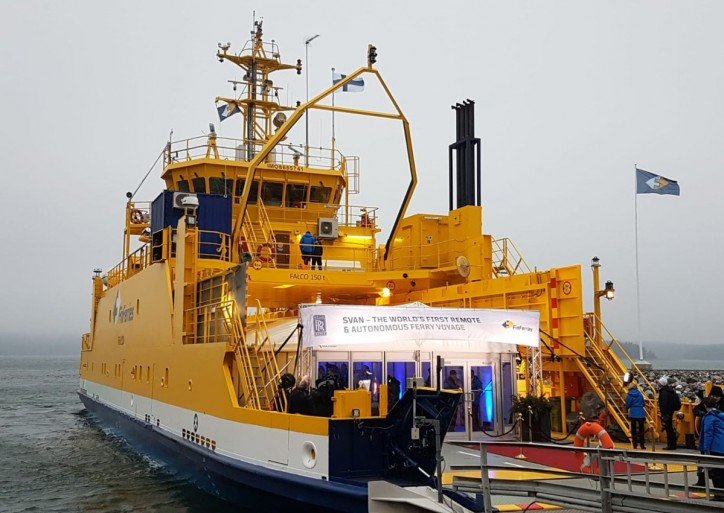
Source: https://www.vesselfinder.com/news/14008-Rolls-Royce-and-Finferries-demonstrate-worlds-first-Fully-Autonomous-Ferry
- December 2018: That same month, Samskip led an initiative called “Seashuttle” of an autonomous Short Sea Shipping vessel, propelled with hydrogen through the use of electrolysis, with the goal of creating more sustainable shipping alternatives. The operations route aims to cover the regular line between Poland and Norway and is supplied in maritime technologies by Kongsberg Maritime; by Hyon in the implementation of hydrogen technologies; and by Massterly in terms of operational MASS.
http://www.samskipmultimodal.com/news/press-release-1
The difficult steps in establishing legal precedents and frameworks to ensure the safe and efficient operations of MASS still lie ahead of us. Similarly, cyber security is still a broad field that requires detailed and extensive investigations before safe passage at sea for MASS vessels are possible. The road ahead is long and arduous, but the companies that have joined these projects have taken the first steps towards developing the technologies that will make suitable adaptations possible and thus make unmanned vessels a reality.
Written by:
- Vanessa Bexiga, Operations Manager (Escola Europea – Intermodal Transport)
Useful Links



